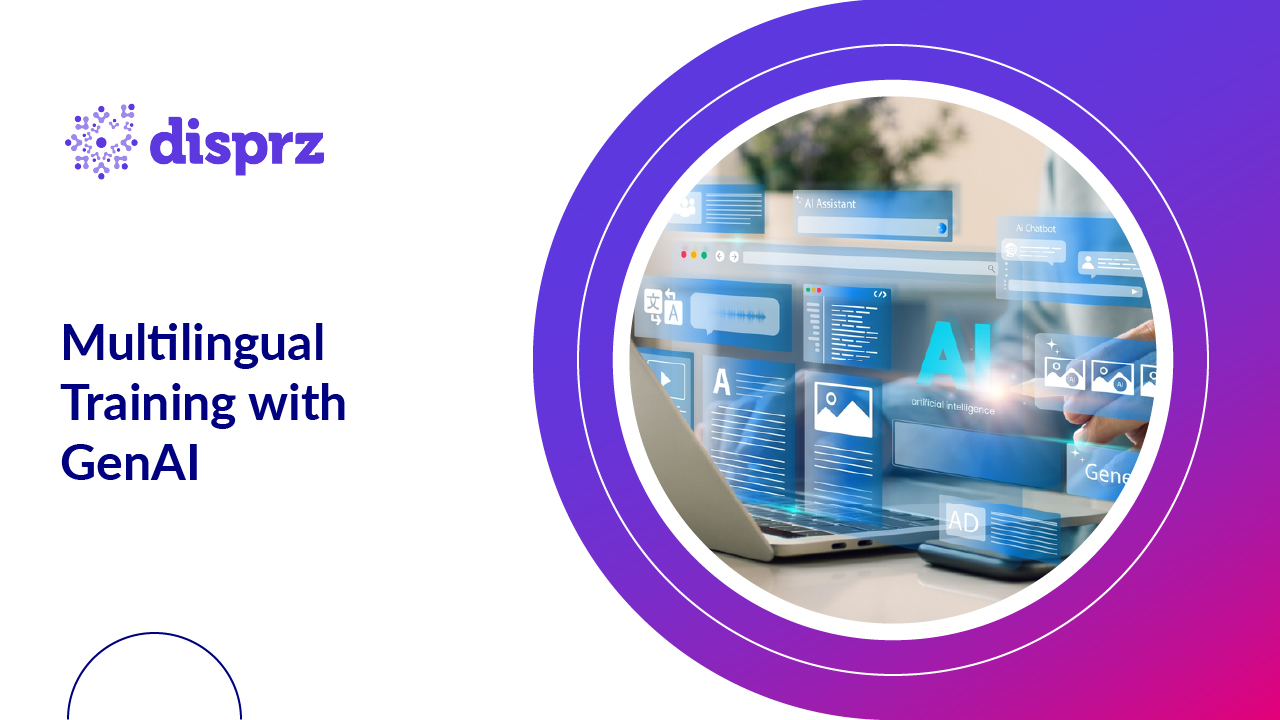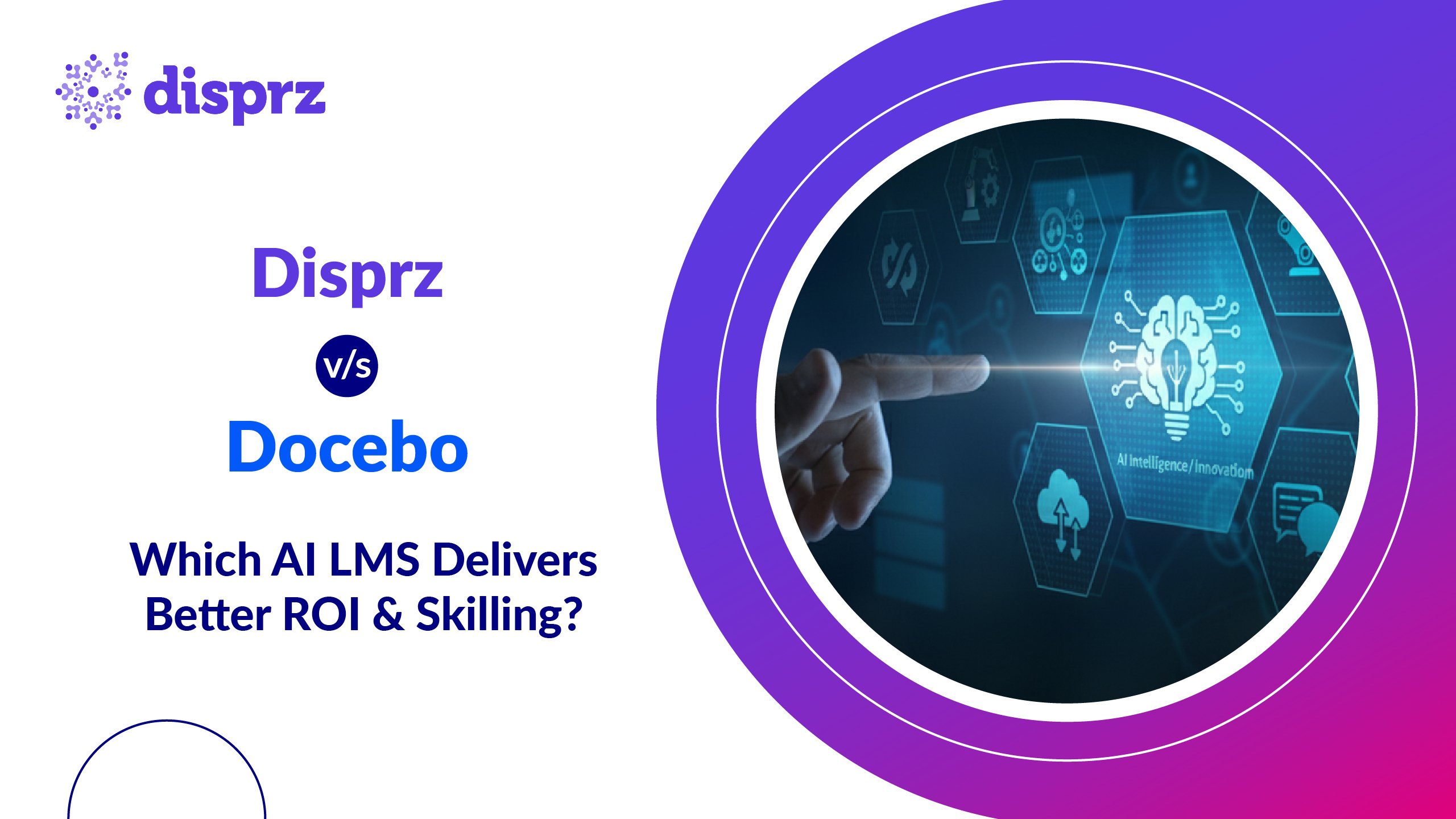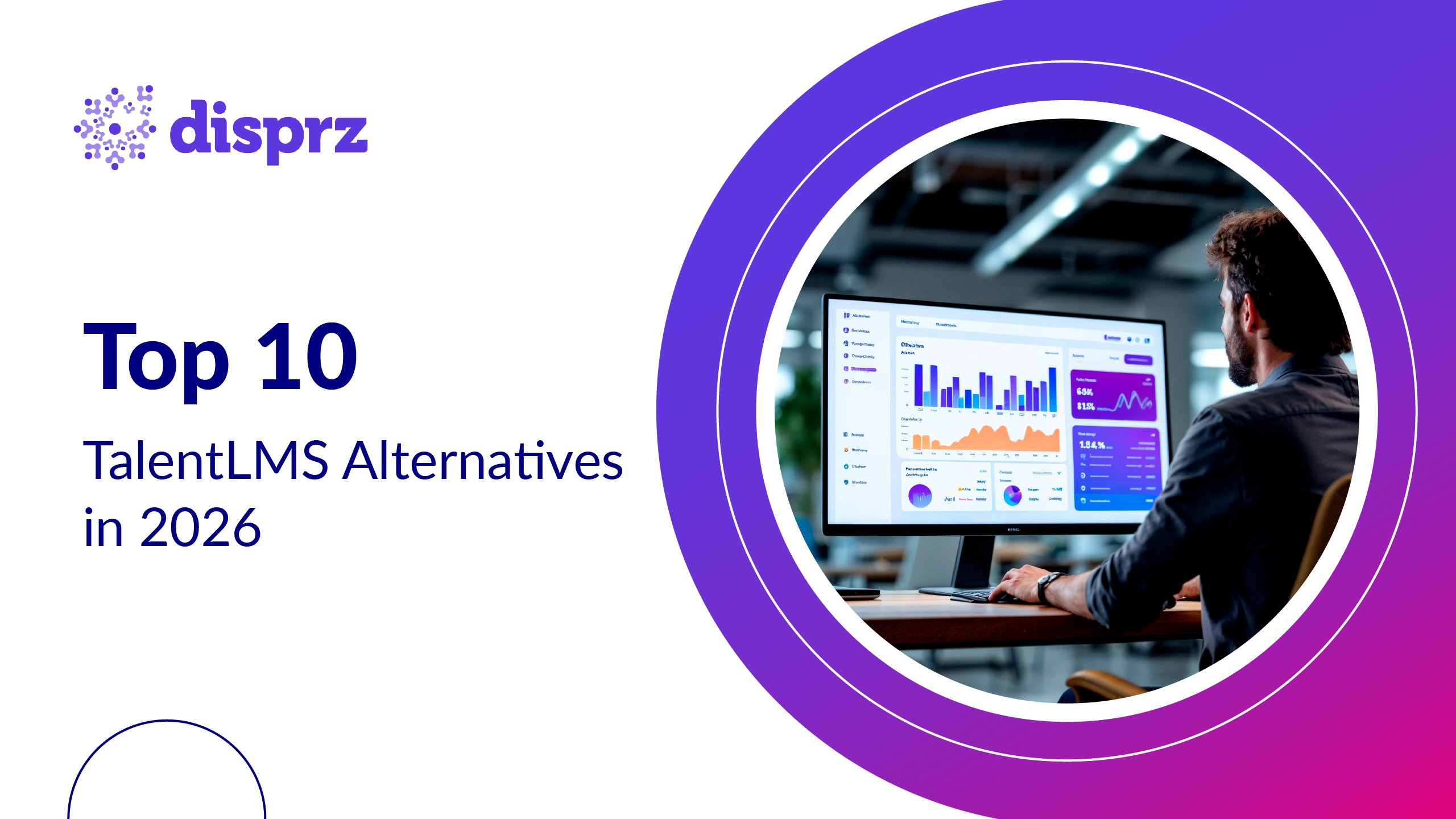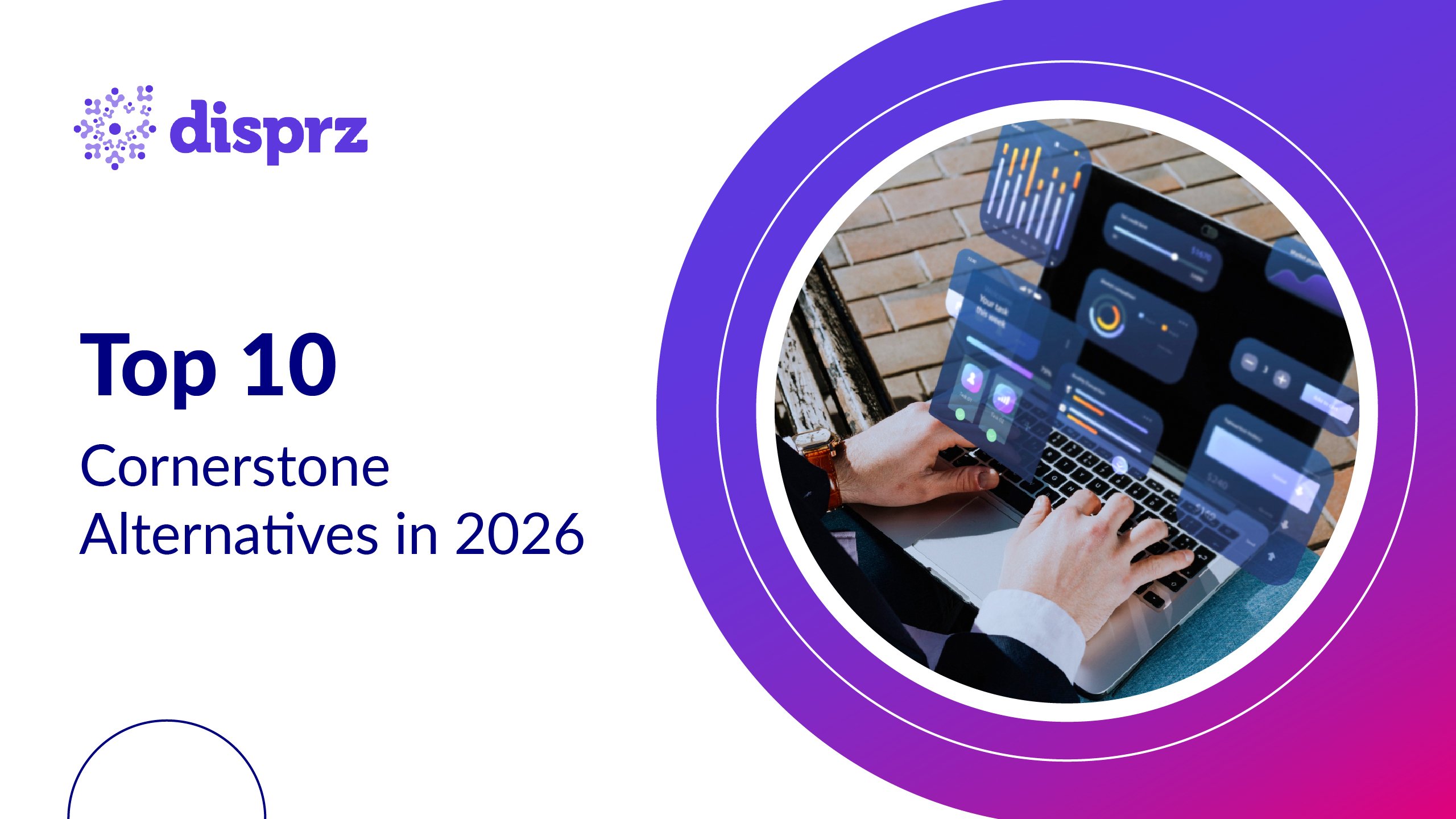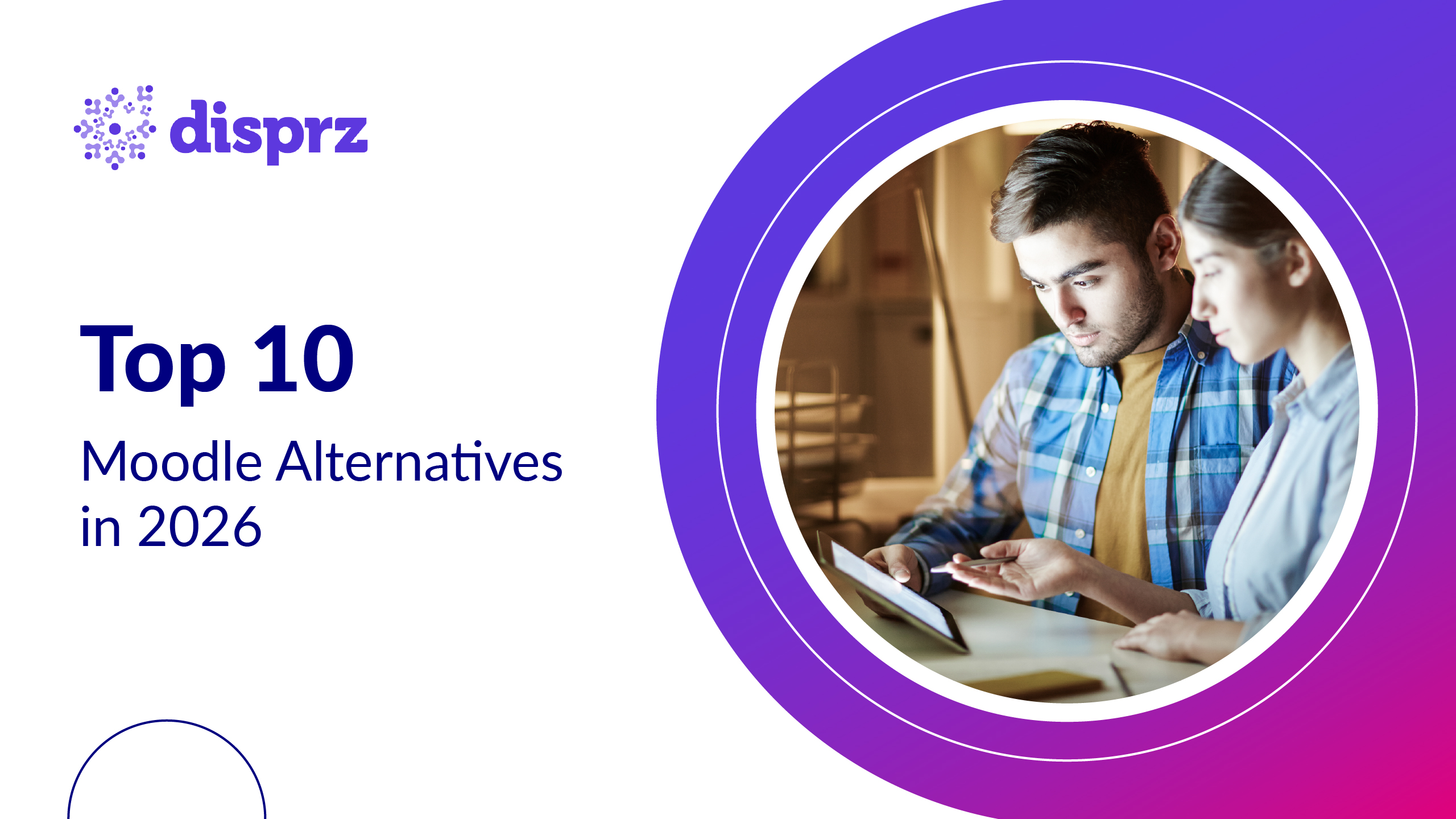In today’s globalized business ecosystem, the reliance on English for corporate training is becoming a significant limitation. With nearly 75% of the global workforce speaking a language other than English as their first language, businesses risk creating an unintentionally exclusive environment — hindering true global workforce enablement and limiting employee engagement and performance. Training content in only one language leaves many employees unable to fully engage, understand, or apply the material.
This goes beyond a simple language barrier; it’s about ensuring equitable access to learning for all employees. As organizations look to build more inclusive and effective training programs, they must consider how to meet the diverse needs of their workforce. Modern Learning Management Systems (LMS), when paired with innovative technologies such as GenAI, can help bridge this gap.
The solution lies in innovative technologies such as GenAI, which enables the intelligent localization of content, making training more accessible and inclusive. By tailoring content to different languages and cultural contexts, GenAI not only breaks down language barriers but also ensures that the tone, accuracy, and relevance of training remain intact across diverse audiences.
Here we explore how GenAI in corporate training is transforming the way the workforce learns, provide real-world use cases, share best practices for inclusive L&D content, and delve into the technology behind it — all while addressing challenges like accuracy and bias and looking ahead to the future of multilingual learning.
Why Inclusivity in Learning Goes Beyond Language
When we talk about inclusivity in corporate learning, most people immediately think of language. It’s an important aspect, but true inclusivity encompasses more than just ensuring that content is available in multiple languages. In fact, inclusivity should be about creating learning experiences that are accessible, engaging, and relevant to all employees, regardless of their background, culture, or learning preferences.
1) Cultural Relevance Matters
Languages can differ, but so can cultural contexts. What works in one region might not resonate in another. For instance, training materials that use idiomatic expressions, humor, or examples drawn from a specific cultural context might fall flat or even be misunderstood in different parts of the world. True inclusivity means going beyond translation to ensure that content aligns with diverse cultural perspectives, making it more engaging and effective for everyone.
2) Different Learning Styles Require Different Approaches
Inclusivity also involves recognizing that people learn in different ways. Some might prefer text-based materials, while others engage better with visual content, interactive modules, or hands-on experiences. Providing only one mode of learning limits access for those whose learning styles don’t align with the method chosen. To be inclusive, training programs must offer flexibility in how content is delivered, catering to a variety of learning preferences.
3) Accessibility for All Abilities
Inclusivity isn’t just about language and culture — it’s also about ensuring that learning is accessible to employees with different abilities. Employees with different visual, auditory, or cognitive abilities should be able to engage with training content just as effectively as others. This means providing alt text for images, closed captioning for videos, and interactive elements that cater to a variety of needs.
4) Empowering Every Employee
At its core, inclusivity in learning is about empowering every employee to reach their potential. By offering training that recognizes diverse needs and backgrounds, organizations create an environment where all employees feel valued and capable of contributing their best work. It’s not just a feel-good initiative; inclusive training drives better performance, higher engagement, and, ultimately, a more successful organization.
GenAI as a Multilingual Superpower
As organizations expand across borders and build diverse, global teams, the importance of delivering inclusive and effective training becomes paramount. Traditional language-based training solutions often fall short in meeting the needs of a multilingual workforce. This is where GenAI steps in, offering a sophisticated approach that transcends simple translation to create truly localized learning experiences.
With GenAI, companies can move beyond static, one-size-fits-all training content. GenAI, if prompted properly, adapts materials to not only different languages but also local cultures, nuances, and learning styles. This enables businesses to deliver dynamic and personalized content that resonates with employees worldwide, fostering deeper engagement and improving learning outcomes. GenAI’s ability to seamlessly integrate real-time localization and contextual adaptation makes it a game-changer for global L&D strategies.
Here’s how GenAI empowers multilingual learning:
Cultural Adaptation: GenAI adjusts content to fit local cultural contexts, ensuring that examples, idioms, and case studies are meaningful and relatable across diverse regions.
Context-Aware Localization: GenAI doesn’t just translate words—it understands the context and modifies tone, expressions, and even structure to make training more relevant and impactful.
Seamless Scalability: GenAI allows businesses to scale training programs globally without sacrificing content quality or consistency, ensuring that training materials are equally effective across all regions.
Real-Time Adaptation: With GenAI’s advanced capabilities, training content is delivered in employees’ preferred languages in real-time, keeping content fresh and contextually relevant.
Real-World Use Cases of GenAI in Multilingual Training
As organizations embrace digital transformation, the need for multilingual training solutions has grown. GenAI has already begun to demonstrate its value across industries, helping companies deliver impactful and culturally relevant learning experiences on a global scale.
Here are a few real-world examples that highlight how GenAI is transforming multilingual training:
Pfizer - Medical Training Across Regions
Pfizer, a leading global pharmaceutical company, needed to train its medical staff across different countries on new procedures and technologies. The challenge was not only linguistic but also related to medical terminologies, which vary by region. Using GenAI, Pfizer offered precise, contextually adapted medical training in multiple languages. The platform ensured that medical terms were correctly translated while keeping the content relevant to the healthcare regulations and practices specific to each region. This improved training efficiency, reduced errors in patient care, and helped medical professionals stay current with medical advancements.
HSBC - Compliance Training
HSBC, a multinational banking and financial services company, had to ensure that all employees understood and adhered to the same compliance standards globally. Compliance training can often be complex, especially when dealing with diverse languages and cultural norms. By implementing GenAI, HSBC provided localized compliance training that met the legal requirements of each region while addressing regional nuances in how compliance issues are approached. This resulted in higher completion rates, better understanding, and a reduction in compliance-related violations, helping HSBC mitigate risks globally.
The Tech Behind the Magic: How GenAI Enables Inclusive Learning
GenAI is transforming the landscape of workforce learning. The magic isn't just in the technology itself, but in how it brings personalized, inclusive learning experiences to life.
Here’s a breakdown of how the tech behind GenAI is driving this transformation:
Real-time Content Adaptation
GenAI uses powerful algorithms to dynamically generate and modify content based on the learner's needs. Whether it's adjusting difficulty levels, topics, or learning formats, this adaptability ensures that each learner's experience is tailored, relevant, and always up-to-date.
Contextual Understanding
One of the standout features of GenAI is its deep understanding of context. In advanced multilingual learning platforms powered by GenAI, it doesn’t just translate words—it understands intent, regional influences, and cultural differences. This results in content that is more nuanced, relatable, and resonates with learners, regardless of their background.
Cultural Relevance and Personalization
GenAI doesn’t simply "speak" multiple languages—it accounts for cultural sensitivities, local customs, and varying learning styles. This ensures that learners across different regions and cultures receive content that feels natural and is easy to engage with.
Scalability for Global Teams
As businesses expand globally, GenAI helps scale learning programs that cater to diverse teams across different regions. With its ability to adapt and localize content instantly, it ensures that employees, no matter where they are, receive the same high-quality learning experience.
Continuous Learning and Improvement
GenAI is not a one-time solution. It evolves with your workforce. As it gathers data and learns from user interactions, it continuously improves the learning experience, providing smarter and more effective content delivery over time.
6 Best Practices for Building Inclusive L&D Content with GenAI
Creating inclusive L&D content isn’t just a nice-to-have anymore; it’s a business imperative. With a diverse workforce that spans cultures, languages, and learning preferences, it’s crucial that the delivered training resonates with everyone. And this is where GenAI steps in, transforming how we think about personalized, scalable, and culturally relevant learning.
Here’s how leading organizations with GenAI-powered learning platforms are using it to lead the charge; and how you should too.
1) Design for Diversity From the Start
Inclusion isn't just something you check off at the end; it should be woven into the very core of your training content. GenAI helps to identify potential blind spots from the outset by analyzing diverse learner profiles and providing actionable insights on how we can better tailor content to meet a variety of cultural and linguistic needs. This approach ensures every employee feels seen and heard, from day one.
2) Leverage Real-Time Localization
Translation is only half the battle. With GenAI, L&D teams can localize training content to be contextually and culturally relevant. Whether it’s adjusting tone, examples, or even visuals, GenAI ensures the learning experience feels native no matter where it’s delivered. This isn’t about making a message work for everyone—it's about making it work for each individual, globally.
3) Personalize Learning Journeys
Personalization is the heart of modern L&D. Thanks to GenAI for creating tailored learning experiences for each employee based on their role, experience, and unique learning style. This level of customization drives engagement, improves retention, and accelerates the development of key skills, making training not just relevant but impactful.
4) Use Data to Drive Continuous Improvement
Inclusion is an ongoing journey, not a one-time checkbox. With GenAI, you have the power to analyze learner interactions in real-time, gaining deep insights into how content is being consumed and where it needs to evolve. This continuous feedback loop allows teams and organizations to stay ahead of the curve, constantly refining their training to meet the ever-changing needs of a diverse workforce.
5) Empower Subject Matter Experts with AI
One of GenAI's unsung strengths is its ability to empower subject matter experts (SMEs). Instead of spending endless hours adapting content, SMEs can use GenAI to rapidly generate, modify, and localize training materials. This accelerates content creation while freeing up experts to focus on strategic goals, ensuring high-quality, inclusive training at scale.
6) Foster an Inclusive Feedback Loop
Training should never be static. With GenAI, learners have the opportunity to actively shape their experience through continuous feedback mechanisms. Whether it's through interactive quizzes or informal surveys, GenAI adapts content based on real-time learner input, ensuring the training stays relevant and responsive to the needs of a diverse audience.
Empower your workforce with the most industry-relevant skilling
Overcoming Challenges: Accuracy, Tone, and Bias in AI Localization
While GenAI brings immense potential to the table for multilingual and inclusive training, it’s crucial to recognize the inherent challenges of ensuring the content is accurate, culturally appropriate, and free from bias.
Here’s how to effectively navigate these hurdles to create truly global, high-quality learning experiences:
1) Accuracy First: Ensuring Meaningful Localization
GenAI isn't just about translating words—it’s about preserving meaning. Literal translations often fail to convey the context, tone, and nuances of the original content. To maintain accuracy, it’s crucial to combine AI with rigorous human validation. This process ensures that the essence of the message remains intact while adapting it to the cultural and linguistic preferences of the audience, making the content relevant and impactful across the globe.
2) Mastering Tone: Adapting to Cultural Sensitivities
Tone plays a pivotal role in effective communication. A message intended to be formal in one region may be perceived as cold in another. GenAI excels in adjusting tone to suit regional expectations—whether it’s adopting a conversational tone for certain cultures or a more authoritative voice for others. Advanced GenAI-powered learning platforms use sentiment analysis and cultural intelligence to adjust tone dynamically, ensuring the learning experience feels both familiar and engaging to all employees, no matter their background.
3) Mitigating Bias: Ensuring Fair Representation
AI systems can inadvertently perpetuate biases—whether based on gender, culture, or other factors. To prevent this, we’ve implemented a comprehensive framework for detecting and eliminating bias in GenAI. This involves training the AI on diverse, inclusive datasets, constantly testing for bias, and refining the model to ensure content is fair and culturally sensitive. Organizations can also use their diverse teams to review AI outputs, ensuring they maintain a high standard of inclusivity.
4) Leveraging Real-Time Feedback for Continuous Adaptation
One of the biggest advantages of GenAI is its ability to evolve. Once your team receives feedback from learners across different regions, your L&D teams can adjust content and fine-tune GenAI’s understanding of local customs, values, and language preferences. This real-time learning allows the system to constantly improve, ensuring content stays relevant and engaging over time, no matter how diverse the learner base.
5) Human Expertise: Complementing AI for Best Results
While GenAI is incredibly powerful, human oversight remains essential. GenAI can help scale content creation and localization, but human experts ensure the final output is aligned with your values and organizational goals. Your SME team should review AI-generated content to catch any nuances the system may miss, providing the perfect blend of technology and human expertise for the most effective training experiences.
The Future of Multilingual L&D: What’s Next with GenAI
The future of multilingual L&D is rapidly evolving, and at the heart of this transformation is GenAI. Traditional language barriers that once limited the effectiveness of global training programs are being replaced by AI-driven solutions. These solutions don’t simply translate content—they truly localize it, adapting learning experiences to the specific cultural context of each region. As a result, L&D programs are becoming more personalized, scalable, and inclusive, engaging employees across diverse geographies and languages.
To make this shift a reality, organizations need more than just a tool; they need a platform that supports and amplifies this change. That’s where Disprz comes in. Harnessing the power of GenAI, Disprz offers a seamless solution for multilingual, inclusive learning and skilling. The platform ensures content is not just translated, but fully localized, capturing regional nuances to maintain both relevance and impact. By scaling these AI-driven learning experiences globally, Disprz helps organizations build a workforce that is skilled, engaged, empowered, and ready for the future, regardless of language or location.
Take Away: Inclusive Learning, Scaled Globally with Disprz
With Disprz, organizations can unlock truly inclusive learning experiences that transcend borders and languages. Powered by GenAI, Disprz localizes content to match regional cultures, ensuring relevance and deeper engagement. Whether your workforce is spread across continents or concentrated in diverse markets, Disprz enables seamless workforce upskilling across regions. By making learning accessible and personalized for everyone, everywhere, Disprz empowers organizations to build a globally competent, future-ready workforce without the friction of traditional language and cultural barriers.



